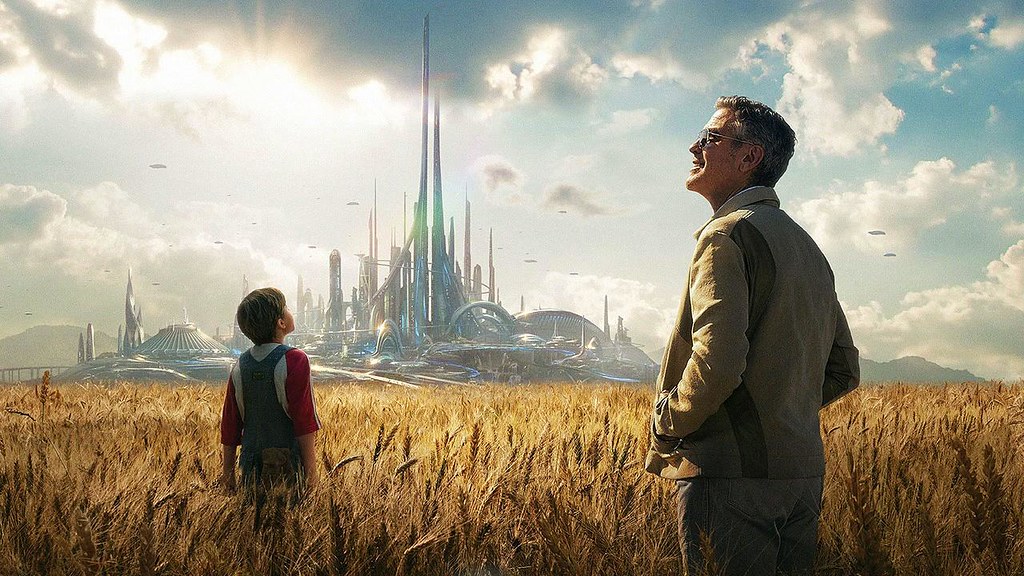Tomorrowland (2015)
explicitly addresses both more utopian urban visions and sustainable views of
the city that promote interdependent relationships between humanity and the
natural world. Offering a futuristic city constructed for the New York City
1964 Worlds Fair as an alternative to dystopic predictions of environmental and
nuclear disasters that may end life on Earth, Tomorrowland does suggest humans are responsible for their possible
dire future. Images of environmental destruction highlight the possible consequences
of the Anthropocentric Age.
But the film also suggests the
probability of an eco-apocalyptic end has been exacerbated by media images
streaming from a device in the utopian city meant to encourage humanity to
change the future on display. Instead of galvanizing viewers, the terrifying
visions of destruction have paralyzed them. To facilitate activism, Tomorrowland replaces apathy with
optimism by eliminating negative media and promoting innovations that improve
the world. Although the solution is rather pat, Tomorrowland does interrogate environmental degradation and does
propose a future city with sustainable principles.
The Disney animated wonder Zootopia (2016) offers a more utopian
urban vision where anthropomorphized animals interact interdependently and
sustainably with the natural world. To create a city where predator and prey
gain equal status, Zootopia confronts its own prejudices, but it must also
eliminate humans. As a future animal city, Zootopia highlights its connections
with nature by including artificial climate zones to accommodate the
environmental needs of its various species.
Several zones featured in the film
highlight the conflicts bunny police officer Judy (Ginnifer Goodwin) and fox
con artist Nick (Jason Bateman) must overcome to transform Zootopia into a
sustainable and interdependent paradise, including downtown, Tundratown, Little
Rodentia, and the Rainforest District. In Zootopia,
the move to a more sustainable and interdependent city requires accommodating
difference, recognizing similarities, and changing ourselves. As Judy explains
during a Police Academy speech,
"No matter what type of animal you are, from the biggest
elephant to our first fox, I implore you: Try. Try to make a difference. Try to
make the world better. Try to look inside yourself and recognize that change
starts with you. It starts with me. It starts with all of us."
In a world without humans, foxes and bunnies can be friends, and
predator and prey become allies.
Tomorrowland and
Zootopia provide more optimistic
visions of urban nature than most films depicting future cities, but they both
also base their solutions on fantastic premises rather than the reality of the
places we live.




No comments:
Post a Comment